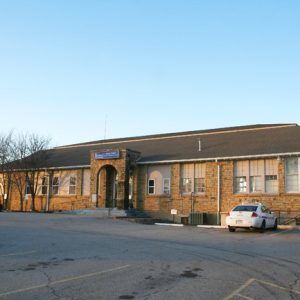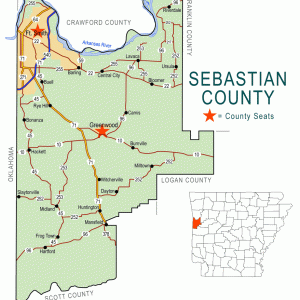calsfoundation@cals.org
Barling (Sebastian County)
| Latitude and Longitude: | 35º19’32″N 094º18’05″W |
| Elevation: | 460 feet |
| Area: | 10.27 square miles (2020 Census) |
| Population: | 4,782 (2020 Census) |
| Incorporated: | June 8, 1956 |
Historical Population as per the U.S. Census:
|
1810 |
1820 |
1830 |
1840 |
1850 |
1860 |
1870 |
1880 |
1890 |
1900 |
|
– |
– |
– |
– |
– |
– |
– |
– |
– |
– |
|
1910 |
1920 |
1930 |
1940 |
1950 |
1960 |
1970 |
1980 |
1990 |
2000 |
|
– |
– |
– |
– |
– |
770 |
1,739 |
3,761 |
4,078 |
4,176 |
|
2010 |
2020 |
|
|
|
|
|
|
|
|
|
4,649 |
4,782 |
|
|
|
|
|
|
|
|
Barling (Sebastian County) is located between one of Arkansas’s major cities, Fort Smith (Sebastian County), and an important twentieth-century army post, Fort Chaffee. The town, originally named Spring Hill, saw its greatest growth to date occur largely because of the founding of Fort Chaffee in 1941.
Barling was established by Aaron Barling, a former soldier stationed at Fort Smith in 1817. He purchased land about eight miles east of Fort Smith on Little Rock Road in November 1830. His farm—and the surrounding area—became known as Spring Hill because of some springs located on his farm at the foot of a hill travelers used as a campsite.
The town experienced little growth early on, with only one log structure used for both school and worship. The lack of any major buildings or population may explain why Spring Hill suffered very little damage at all during the Civil War, which left the town essentially untouched, though residents were ordered to leave the area when Federal troops took Fort Smith. After the war, however, the population did experience a small growth, with the settling of people such as J. W. Maddux, who would later build several stores, including the town’s general store. His first enterprise, however, was to organize a Methodist Episcopal Church, South, congregation in 1873.
The defining moment of Spring Hill’s nineteenth-century existence came on January 24, 1890, when the town received its own post office. Since there was already a Spring Hill post office for a township of the same name in Hempstead County, the town was forced to offer a new name for its post office. Local citizen and future state governor, William Fishback, suggested that the post office—and subsequently the town—be known as Barling after its first settler. Only gradually did the new name take hold; some old maps read, “Spring Hill, Barling Post Office.”
Barling continued to grow with several additions, including the town’s first resident doctor, I. H. Ryan, in the 1890s; a new cotton gin, sawmill, and gristmill owned by Ollie Bugg around 1900; the introduction of telephone service in 1910; and even more new buildings: a drugstore and grocery store owned by L. L. Swift, a new Catholic church, and a Baptist church. Between 1890 and 1900, a schoolhouse was built on land donated by R. C. Barling. In 1912, the Freemasons built a two-story building across the front of the schoolhouse; they used the top floor and allowed the school to use the bottom floor, making Barling’s a two-room school.
The town, though small, shared in many of the nation’s experiences of the early twentieth century, including World War I and the following Spanish Influenza. Many national organizations also found their way to the unincorporated town, including Woodmen of the World (WOW) and the Ladies Auxiliary, Freemasons and the Eastern Star organization, the Home Demonstration Club, and 4-H clubs. When the aforementioned meetings, church socials, and community picnics were not enough distraction or entertainment, however, residents could board the local commuter train, known as “the Dinky,” and wind their way to Fort Smith.
Barling experienced its greatest growth beginning in 1941 when the U.S. Army built Camp Chaffee—later Fort Chaffee—near the town. With the advent of the camp came more jobs for locals, thereby also increasing the chances for revenue. Stores were quickly enlarged, and new businesses, such as cafes and tourist centers, quickly moved into town.
In 1936, an agreement between Barling and Lavaca (Sebastian County) called for Barling to take Lavaca’s black pupils to a school in Barling, and in return, Lavaca would take Barling’s high school students. In 1937, a new grade school building was built in Barling and was ready for use in September 1938. Barling’s agreement with Lavaca stood until Barling schools consolidated with Fort Smith’s in 1948; however, the town did maintain its own elementary school. Sixth grade was kept at Barling but under the management of Fort Smith. In 1973, a new grade school was built, and the old one became the town’s new city hall.
Barling is now a strong, thriving community of more than 4,000 people. The town hosts many small businesses, seven churches, two retirement homes, and a head-start school. The town has also recently acquired unused land from Fort Chaffee, thereby ensuring enough area for its future growth.
Baseball player Hal Smith was born in Barling. Disability advocate and Vietnam War veteran Chad Colley has a home in Barling.
For additional information:
History of Barling. http://www.barlingar.com/plan_ch_2.htm (accessed April 13, 2022).
Lilly Wingfield
Barling, Arkansas
 Barling City Hall
Barling City Hall  Sebastian County Map
Sebastian County Map 




I’ve often heard about Negro Hill on Barling’s west end. Also info. about the small cemetery and the old concrete highway. I’m looking for any maps or aerial pictures. I believe there was a gas station across the highway from Negro Hill.
I loved reading about Barling. I’m a direct descendant of Aaron Barling. My mother is Cheryl Barling, daughter of Robert Edward Barling.